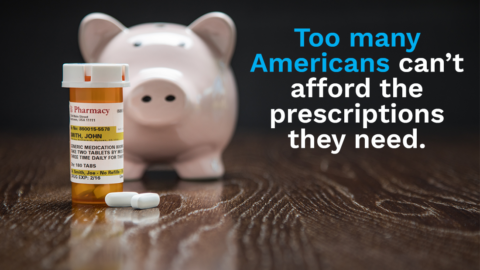Historic Drug Legislation Passed: What It Means for Employers and American Workers

TOPLINES
The landmark drug pricing reforms passed by Congress and signed into law by President Biden on August 16 will provide needed relief from the burden of prescription medication costs for many Americans by enabling Medicare to negotiate prices for certain high-cost drugs and limit further price increases.
This was an historic step in curbing what most Americans agree is an issue that Congress has long needed to address. Unfortunately, based on arcane Senate rules, the drug price provisions in the Inflation Reduction Act will not extend protections to the 180 million Americans with commercial health coverage.
Here, a look at what the law will and won’t do, and the steps large private employers and public purchasers of health care can take to help mitigate rising drug costs in the wake of legislation, that at least for now left them behind.
What the Law Accomplishes
The new law includes a provision that will enable the Centers for Medicare and Medicaid Services (CMS) to begin negotiating prices in Medicare starting in 2026 for a limited number of high-cost drugs that lack generic or biosimilar competition.
This marks a significant break from the existing prohibition on negotiation, which was a condition for drug manufacturers’ support for the creation of Medicare Part D nearly 20 years ago. That prohibition, combined with the market exclusivity for new drugs granted under the Hatch-Waxman framework, has allowed drug companies to set prices without competition or negotiation. This law begins to pierce the monopolies drug companies have long enjoyed, an important first step in pursuing further legislative action. CMS previously estimated that an earlier version of the negotiation proposal could reduce Medicare enrollee cost-sharing expenses by more than $102 billion by 2029.
Two other key provisions of the law include a $2,000 cap on out-of-pocket spending for Part D enrollees and a reduction in Medicare beneficiaries’ portion of total drug costs below the $2,000 out-of-pocket cost threshold from 25% to 23%.
Further, the bill requires manufacturers to pay rebates to CMS if drug prices charged to Medicare increase faster than the rate of inflation. This will apply to all drugs over $100 covered by Medicare Part D and single-source drugs and biologics covered by Part B. The penalty is expected to discourage drug makers from raising prices in Medicare, thereby reducing out-of-pocket costs for Medicare beneficiaries and constraining Part D premium increases.
What the Law Does Not Do
While this legislation is step in the right direction toward controlling prescription drug prices, it does not protect the 180 million Americans who get their health insurance coverage either through their employer or on the private market. Therefore, large employers and public purchasers that provide coverage to working Americans must remain vigilant and be ready to call attention to any adverse effects of this new law once it is implemented, including the potential of dramatic increases in the launch prices of new drugs and for existing medications, which would indicate manufacturers are charging high prices to make up for lost Medicare revenue.
We have seen this kind of cost-shifting before in the hospital sector, with ample evidence demonstrating that large private employers and public purchasers pay an average 224% more than Medicare for the same services. PBGH and its members will be watching prescription drug prices for evidence of cost-shifting to make up for lost Medicare revenue. This could lead to future opportunities for additional policy changes.
6 Steps Large Health Care Purchasers Can Take to Mitigate Cost Increases
In the absence of further policy changes, PBGH recommends six steps employers and purchasers can take to address the exceedingly high-cost burden of prescription drugs:
- Engage in a detailed negotiations with pharmacy benefit managers (PBMs) related to rebates and insist that all earned rebate dollars are passed back to you as the employer/purchaser.
- Take your PBM out to bid at the end of every contract cycle and consider working with new market entrants that have adopted a more innovative, transparent approach aligned with the needs of employers and American workers.
- Scrutinize your PBM contract and ensure you have access to the data ownership and audit rights you need to evaluate and optimize your pharmacy benefit.
- Look at total manufacturer revenue, not just rebates, and push for a guarantee of a major percentage of all manufacturer revenues, or the higher of, the guaranteed rebate amount or actual manufacturer rebates earned.
- Ensure your PBM contract has contractual terms clearly defined in an all-inclusive Definitions section, using the readily accessible industry standards as the source, and include a clause dictating that the terms and their definitions are only available once.
- Use your purchasing power to ensure your PBM is consistently working in you and your employees’ best interests.
You can learn more about how to evaluate the drug supply chain and your PBM performance here.



